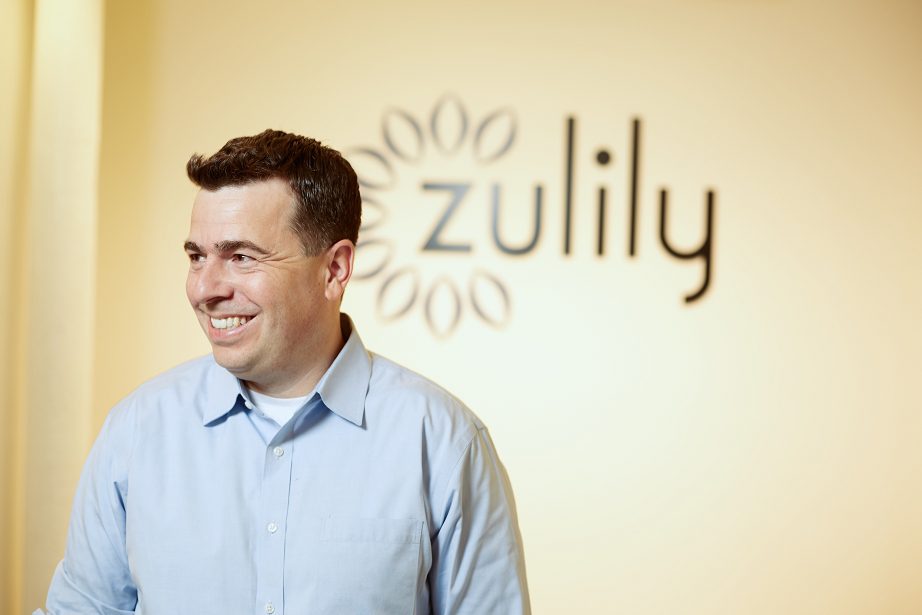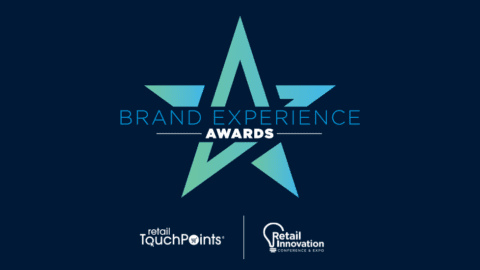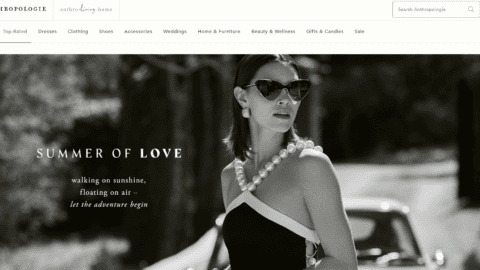Data and hard facts are important in marketing, but there are also elements of “art” involved, according to Kevin Saliba, SVP of Marketing at zulily. The retailer seems to have found the right mix of science and art: zulily has made significant strides to widen its base and foster more recurring buyers over the last 18 months. Since Saliba took over the position in January 2017, zulily has increased its customer base 24% to 6.1 million active customers, while growing its private label credit card membership to 160,000 accounts.
In a Q&A with Retail TouchPoints, Saliba, who also was recently named to the Wine.com Board of Directors, explains:
- The importance of balancing customer acquisition and retention strategies;
- How being acquired by QVC in 2015 has helped the retailer engage consumers through Facebook Live product videos;
- Why native advertising is benefitting both its brands and consumers; and
- How zulily-branded credit cards foster customer loyalty.
Retail TouchPoints (RTP): What have been the goals of the zulily marketing strategy since you stepped into the role?
Kevin Saliba: We’re very much a surprise and delight type of company and we’re trying to engage customers with new and different products every day. We do that at great prices, but it’s really about new, different and inspiring products.
When I took over the marketing role here, I really wanted to make sure that we were customer-obsessed. Delivering the right message at the right time to the customer was important. We’ve done a lot of work on the back end making sure that we have the right analytics in place and data available, so that we can optimize and tweak. The goal is for the customer to get the best message at the right time.
I would argue that there’s a strong mix between the art and science of marketing. That’s something we’ve figured out, and that’s why we’re seeing the growth in active customers that we are.
RTP: As many as 91% of purchases at zulily come from repeat customers. Is the focus on retention rather than acquisition a key strategy?
Saliba: When we think about new customers and we think about existing customers, we’re really focused on both. We primarily try to find and engage new customers and we want them to sign up on our site, buy a product and try it to really get the whole zulily experience. As they continue on with us, we send them different information through email, a push notification or through Facebook Messenger, and we tell them all the new, fun and exciting things that are happening that day on zulily. It’s really an effort to get them to engage and purchase with us again.
So we’re really focused on attracting new customers as well as engaging those that are on our site already. That’s why you see the overall net active customer growth numbers is more than 16%. We’ve gone from 5 million to 5.8 million by the end of 2017.
RTP: Last year, RTP covered storytelling practices related to zulily’s imagery. What type of storytelling experiences do you produce for Facebook Live and other social media channels?
Saliba: Since the QVC acquisition — they’re really the leaders in video commerce — we’ve learned a lot from them, and we’ve tried to replicate that through Facebook Live. We’re featuring different Facebook Live segments each day, sometimes one or several, and we’re really trying to add more context and more color to the products we’re selling by telling stories. Sometimes we’ll actually physically go to the brand’s headquarters and do the segment from there. We do it all in a way to get the customer excited.
We actually engage with the customer throughout the segment. They’re allowed to comment, they write to us and ask questions, and we’ll address them on air. We’ve done more than 300 segments so far on air. We’ve reached an audience in excess of 50 million viewers, so it’s been fantastic growth for us, and it’s a fun way to bring products to these customers.
RTP: How are you able to manage and understand such a large base of viewers, particularly the comments and interactions via Facebook Live?
Saliba: The feedback mechanism is something I really wanted to understand early on. When we do have a large audience, and they are asking for different things, how do we make sure we measure it? We built proprietary tools on the back end that help us analyze the questions and the engagement. We could see in real time how many viewers we have, what their behavior is, and we could see sales and correlate back to things that we said on air.
We do real-time tweaks; we’ll talk to some of the customers as they talk. We’ll also look at the data afterward and make adjustments for future episodes. QVC has been very supportive. They’ve been doing video commerce for well over 30 years on television, and they’ve taught us how to look at these experiences from a Facebook Live perspective.
RTP: How is zulily leveraging native advertising for its brands?
Saliba: It’s quite a lucrative component of our EBITDA now. We started by doing physical products. We’re shipping tons of boxes each day to our customers, so we’ll work with some of our brands and they’ll want to put a sample in the box just to give the customer exposure to their products. That’s how the program really started and it grew from there.
Now we have various strategies where we’ll allow the brand to have a home page takeover on our site, or we’ll do something with our social media team. Instead of just selling the products, we’ll do things to engage the consumer. So maybe it’s, “Hey, sign up to win a shopping spree.” We’ve worked with a cruise line before…they wanted to give someone a free cruise and they just wanted to make sure our customers knew how engaging their product was. We’ll work with them in that regard.
We do products with lots of chocolate companies, so Brookside Chocolate is a big one. We’ve done Teddy Soft Bakes, Bert’s Bees products and we’ve even done a Disney vacation destination.
RTP: How does zulily manage multiple marketing divisions effectively? Were there challenges you had to overcome?
Saliba: It’s really a cross-collaboration effort. We have one team that’s focused on acquiring the customers, another team focused on retention and the lifecycle of those customers, and another team focused on the brand and creative. It takes the entire team working together in harmony to see success.
We’re launching over 100 events a day, and we have more than 9,000 different SKUs. The average Costco has around 4,500 SKUs, so we like to say we’re launching two Costcos a day. It’s probably similar to the newspaper industry in that we start from scratch every day. With that much activity going on, it’s even more important that everyone’s collaborating and working together.
RTP: Zulily launched a private label credit card in 2017. Can you explain some of the benefits of this strategy? Does the card drive customer loyalty?
Saliba: We have well over 100,000 credit card accounts now, and those customers are driving higher repeat rates and higher average order value. They’re spending more on zulily. There’s a small discount they get for trying it out in the beginning. We then offer what we call Smart Pay, a deferred payment plan with no interest that enables shoppers to pay for a product in one, two or three payments.
We also do fun and exciting things on more of a surprise basis. We’ll give members early access to some products and have exclusive events for them. We did one with movie tickets; we try to engage these customers so it feels like something special for them. It’s a great success and I’m very pleased with the team and the numbers they’ve put up so far.
RTP: Can you give a preview into zulily’s marketing strategies for 2018 and beyond?
Saliba: In terms of the next few months, we’re really focusing on the data on how our customers are behaving so we can offer the right product at the right time. We’re also working on several automated ad tools that are really helping us maximize the efficiency of our spend. You can imagine with a site that’s changing content every day, it’s really important that you’re able to turn ads on and off as needed.
RTP: What lessons have you learned from your time at ImageKind and CafePress that you have applied to marketing strategies at zulily?
Saliba: In my past, and working for some of those smaller companies with a startup base, you learn that there’s an element of hustle you need to have when you have a smaller company and fewer resources. There’s scrappiness you need to have, and sort of a “school of hard knocks” to go through when you do that. I’ve been able to apply that at zulily by realizing that you have to rise above and set a vision, but also be able to roll up your sleeves and get into the details.
Even at zulily, a $1.6 billion company, we have a 100-person team where I need to know enough about what’s going on in each department, but I need to let them run on their own. I need to create the vision, but get out of their way and let them do their thing.
RTP: What has been your proudest achievement in your time at zulily?
Saliba: I’m really proud of what the team has delivered in the last year with regards to the increase in customers.Before I joined the team, I think there were like nine quarters of flat growth, and by mid-2017 we saw that curve kick up. It’s been very impressive — it’s great to see what they’ve done, they found the white space, they saw the opportunity and they made the adjustments need.
RTP: Who have been your mentors throughout your career?
Saliba: Over the last couple of years, as we were acquired by QVC, now the Qurate Retail Group, we’ve really infused a culture here with more leadership, and we’ve gotten to learn a lot from them. Right now specifically I’m learning a lot from Mike George, the CEO of Qurate. He has an interesting perspective and unique approach to the business, he’s been a helpful mentor in the last few months and he’s someone you look to to help lead the charge.














